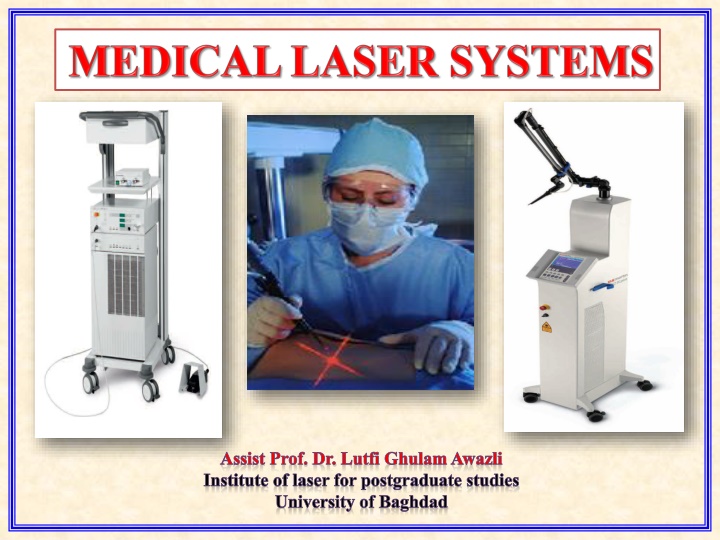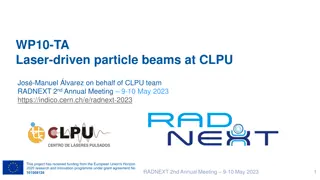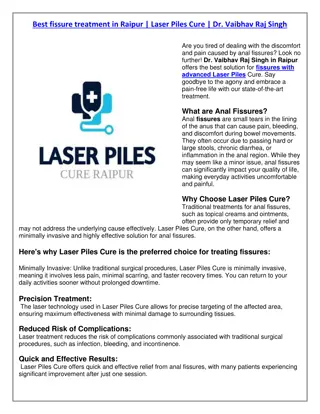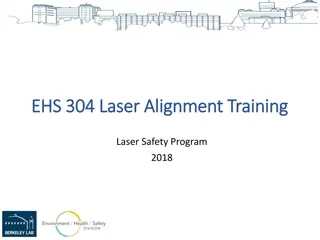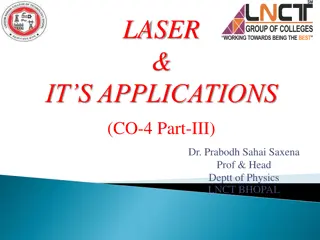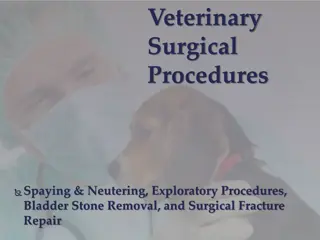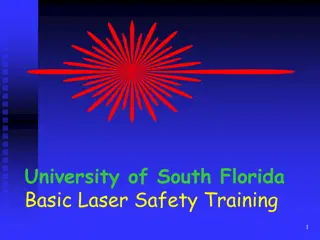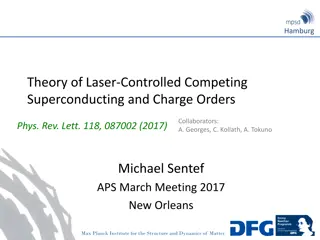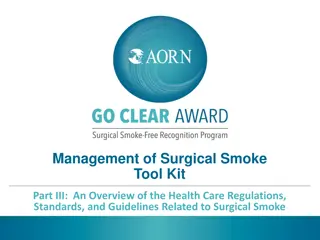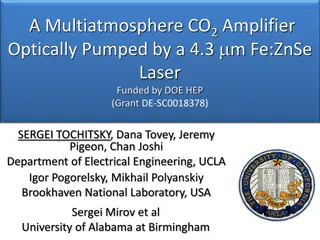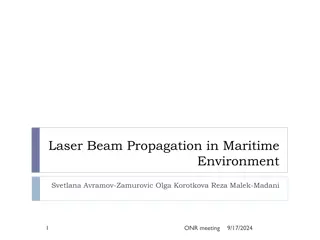Overview of Laser Delivery Systems for Surgical Procedures
Institute of Laser for Postgraduate Studies at the University of Baghdad, led by Assist. Prof. Dr. Lutfi Ghulam Awazli, focuses on laser delivery systems in surgical procedures. The systems discussed include optical fibers, articulated arms, hollow waveguides, and free beams. Optical fibers, composed of a core and cladding, provide efficient transmission of optical power with limitations on the wavelengths they can transmit. Articulated arms consist of rigid components for precise beam delivery. Understanding these delivery systems is crucial for enhancing surgical laser applications.
Download Presentation

Please find below an Image/Link to download the presentation.
The content on the website is provided AS IS for your information and personal use only. It may not be sold, licensed, or shared on other websites without obtaining consent from the author.If you encounter any issues during the download, it is possible that the publisher has removed the file from their server.
You are allowed to download the files provided on this website for personal or commercial use, subject to the condition that they are used lawfully. All files are the property of their respective owners.
The content on the website is provided AS IS for your information and personal use only. It may not be sold, licensed, or shared on other websites without obtaining consent from the author.
E N D
Presentation Transcript
Assist Prof. Dr. Lutfi Ghulam Awazli Institute of laser for postgraduate studies University of Baghdad
TYPES OF DELIVERY SYSTEMS (LASER TRANSMISSION ) The size and weight of typical surgical laser systems are such that the laser cannot be held in the surgeon s hand like a scalpel. It is relatively immobile. Therefore some flexible, light weight device must be provided to transmit the radiant power from the laser to the surgical target. There are different types of delivery systems( laser transmission) : 1- Optical fiber 2-Articulated arm 3- Hollow waveguide 4- Free beam
1-The Optical Fibers : The Optical Fibers is composed of three parts: the core which is a solid slender monofilament of crystalline silicon dioxide, which is coated with an adherent, thin layer of another material, called the cladding, having a lower index of refraction than that of the core. Light is kept in the core by total internal reflection. This causes the fiber to act as a waveguide. transmit light between the two ends of the fiber. Fibers intended for freehand use in general surgery also have a loose-fitting outer jacket, or sheath, with a small annular space between it and the cladding of the fiber to allow the transmission of gas or liquid for cooling the fiber and its terminating devices. Both the cladding and the jacket may be made of suitable polymeric materials. The Optical Fiber is an almost ideal method of transmission because it transmits a good percentage of optical power. It is flexible and solid and can be used inside the body with flexible endoscope. However, there are two limitations. It can only transmit near-ultraviolet, visible and near infrared wavelengths in CW output or in long pulses (micro- and milliseconds). Moreover, it changes the geometry of the laser beam which, as it exits the fiber, is no longer almost parallel but strongly diverging. The structure of a typical optical fiber
The acceptance angle : is the largest incident angle ray that can be coupled into a guided ray within the fiber. Light rays whose angles of incidence exceed this limit do not undergo total internal reflection. The acceptance angle is related to the refractive indices of the core, and the surrounding cladding.
2-Articulated arms : The articulated arms consists of seven rigid, metallic, 90 elbows, each with a plane mirror at its apex, set at 45 to the axes of the elbow s stubs, and two long, straight rigid tubes. The first four elbows are connected in two close coupled pairs, and the last three are connected as a close coupled triplet. Each elbow is free to rotate a full 360 relative to the elbow just proximal to it, while always maintaining coaxial alignment of the mirrors that face one another. The proximal straight tube connects the first elbow-pair to the second, and the distal straight tube connects the second elbow-pair to the elbow triplet at the output end of the arm. For lasers emitting in the far ultraviolet ( excimer lasers: 193 nm) or in the far infrared region ( carbon dioxide lasers: 10600 nm) or for very short pulses (e.g. nanosecond Nd:YAG lasers) it is necessary to use an articulated arm with multiple mirrors. These articulated arms do not change the beam geometry which remains almost parallel. The technology of articulated arms has progressed recently. But they are still bulky and cannot be used in a flexible endoscope.
At the distal end of the arm, a focusing hand-piece may be attached for free-hand surgery, the arm may be coupled to a micromanipulator for use with a surgical microscope, or the arm may be connected to a rigid endoscope (laparoscope, bronchoscope, arthroscope, etc.). Figure: Schematic drawing of a typical articulated arm used for transmitting the beam of a CO2 laser.
3- Hollow waveguides : In the latter half of the 1980s, several companies introduced hollow tubes for the transmission of light from the CO2 laser. The cross-section of such waveguides is usually circular. There are two types of hollow guides: Rigid hollow made of either a metal-like stainless steel or aluminum tubes with the interior surface highly polished, which have the ability to guide the laser light along several tens of cm with very little loss of power. Their exterior diameter varies from about 2 to 5 mm. They are well suited to the use of CO2lasers in endoscopy. Flexible hollow tubes whose interior is coated with a metallic deposit which reflects a CO2laser beam. This technology is less expensive than the articulated arm, and so they are often used with basic CO2lasers, with maximum power of 20 W. Figure : Luxar (Lumenis) Novapulse Model LX-20SP CO2 laser rated at 20 watts output power. The beam is transmitted through a long, slender, flexible, hollow waveguide fiber terminated in a handpiece for free-hand surgery. Courtesy of Luxar Corporation, Bothell, WA.
4- Direct beam : If the laser head is made small enough to fit into the hand, the laser can be used by firing directly to the target.
